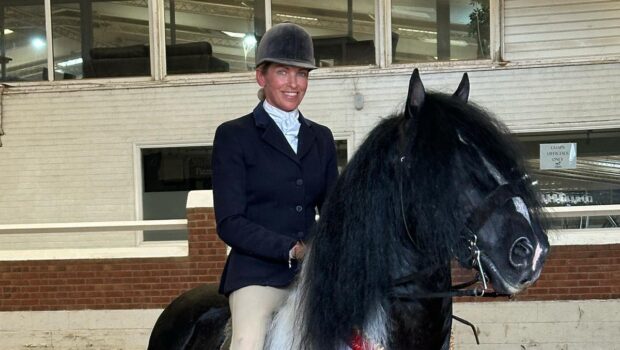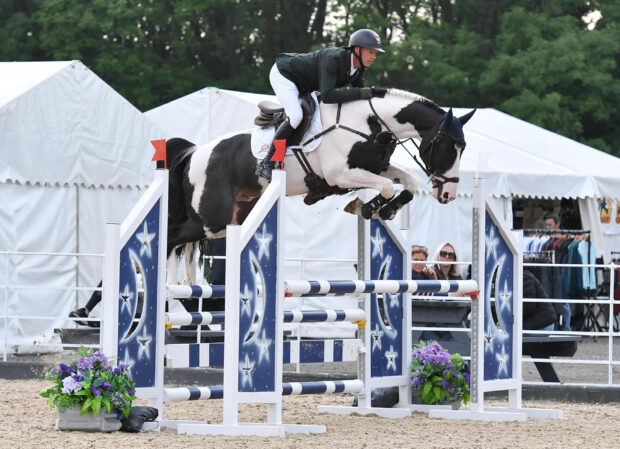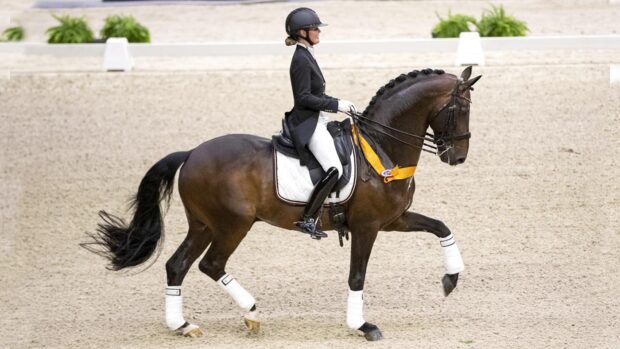What happens at the grading?
Stallions are assessed on conformation, movement (in-hand and loose) and loose jumping, and shown under saddle at walk, trot and canter. The owner may opt for the horse to be jumped under saddle.
Any stallion can be examined by the veterinary surgeon at the grading, which may include scoping, a blood test and X-ray.
To become life approved, stallions must present a progeny group of at least three horses with SHB(GB) papers and of the required standard.
How are the marks distributed and what qualities are looked for?
Correct conformation is very important, but the stallion does need to show a good attitude and temperament and have potential or proven ability.
He is marked out of 10 in front shoulders and withers, topline and quarters, foreleg, hindleg, correctness of movement, loose carriage and elasticity, flatwork under saddle, jumping under saddle, loose jumping and general impression.
A performance mark is also given based on the horse’s record in open competition.
How many judges grade the stallions?
Three.
Which horses are eligible?
Stallions of any breed must be 153cm (15hh) or above and three years old or over. They must have at least three generations of proven pedigree or come forward for assessment for the Approved Stallion Register.
Owners must be SHB(GB) members. Certain stallions graded with any foreign society that is a full member of the World Breeding Federation for Sport Horses can also apply.
Do stallions need a prior veterinary examination?
Yes — a five-stage veterinary certificate carried out by a recognised specialist equine vet and issued no more than three months prior to the closing date of entries for the grading.
How many stallions come forward and what percentage is successful?
Usually 25-30 stallions enter and, on average, the number passing would be 25-30%.
What are the different grading levels?
Stallions which pass are termed “graded”. Those without three generations of proven breeding or, in the case of older horses, who cannot meet the performance requirements, go through the same assessment but are referred to as approved. Stallions are granted the title “elite” if they or their progeny fulfil certain criteria.
What is your assessment of the standard of presentation? How should people prepare?
It has definitely improved. The main problem is that people cannot look objectively at their own horses. Some horses come forward with poor conformation and no attributes you would look for in a breeding stallion. Often, owners cannot differentiate between a good competition horse and stallion potential.
Do you have turn-out rules?
Handlers and stallions should be turned out as if they were in the competition ring. Hard hats must be worn at all times when riding or handling stallions.
What is the entry fee and is any documentation required on the day?
£352.50. The horse’s passport, veterinary certificate and verification of competition success is also needed. If the horse does not already have a DNA profile, this costs £40.
After grading, does the stallion have to be reinspected?
Three- to six-year-olds have to return for a second assessment. Three-year-olds return at five, while four-, five- and six-year-olds come back the following year.
Older stallions entered for the first time must have competed to a minimum of medium dressage, intermediate eventing or grade B show jumping, but they need appear only once.
Dates and venues of 2007 gradings?
22-23 March at Addington Manor with another in late October/early November. Contact: (tel: 01732 866277) www.sporthorsegb.co.uk
Get the inside story on stallion gradings with other sport horse societies, including BHHS, BWBS, AES, CHAPS, SSH and TBF in the current issue of Horse & Hound (8 February, ’07) on sale now



